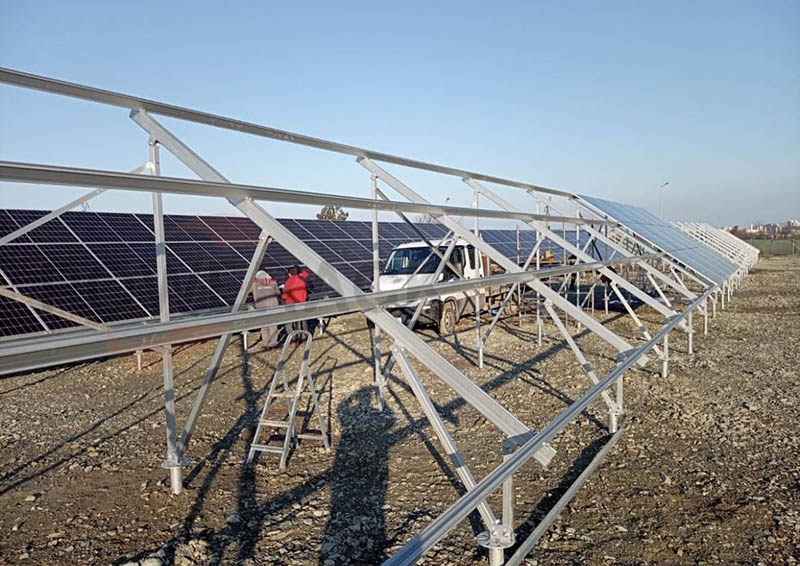
The quality and cost of the key support structure of PV mounts are critical to the performance and value of the entire PV system. Aluminum alloy, traditional carbon power station steel and zinc-aluminum-magnesium, as the mainstream PV bracket materials in the market, each have their own advantages in terms of production cost, mechanical properties, corrosion resistance and service life.
Aluminum Alloy Bracket Analysis:Lightweight but insufficient stiffness, poor load-bearing tensile strength 390-420MPa; good corrosion resistance but poor corrosion resistance in alkali environments. Mainly applicable to home photovoltaic scenarios.
Traditional Carbon Steel Photovoltaic Mounts Analysis:Stiffness reached but short dosage, but need to be hot-dip galvanized to improve its corrosion resistance. Lower cost, but heavy weight, difficult to carry, slow installation, high labor cost, high transportation cost. Mainly used in outdoor large centralized scenes.
Zinc Aluminum Magnesium Photovoltaic Bracket Analysis: zinc aluminum magnesium alloy material has the characteristics of lightweight and high strength, can significantly reduce the weight of the photovoltaic bracket, reduce the weight of about 30%. With high strength, corrosion resistance, good durability and other characteristics, excellent antioxidant performance, with automatic repair function, after cutting the cutting surface of the plating components continue to dissolve, the formation of a protective layer, suitable for harsh environments, but the cost is relatively high.
Powerack can provide PV mounts in a wide range of materials and has many years of experience and welcomes inquiries from customers all over the world.